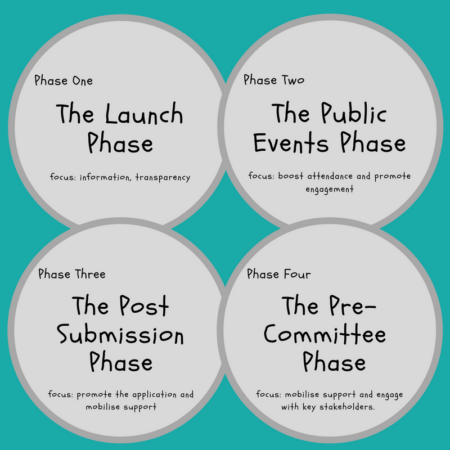How to use social media to help ensure planning approval

In my last blog, I used findings from becg’s joint report with YouGov to outline the importance of digital campaigning to a successful consultation (read the full piece here). My argument was simple, ‘going digital’ not only helps developers to curry favour with local stakeholders, but it also enables them to reach more of the general public. This in turn should increase the likelihood of gaining planning approval.
Whilst the benefits of ‘going digital’ are clear cut, creating a successful campaign is anything but. If you want to see results, you’ll have to do much much more than write a few Facebook posts about your proposals.
At becg we believe that an impactful digital strategy has to take two key things into consideration. Firstly, the consultation process is complex, and this presents several communications challenges. Secondly, the only way to deal with this complexity is to break the consultation process into a number of phases.
The length and case-specific nature of the consultation process means that any communications strategy tends to have multiple (sometimes conflicting) objectives and several (often very different) audiences. This is problematic, because the best strategies have clear objectives and are targeted to a specific audience. Communicating ‘information about the consultation’ to ‘the general public’ is about as far away from clarity and specificity as you can get.
As a result many campaigns tend to be a fudge, with generic messages being pushed out to as many people as possible, with the overriding hope being that something sticks. This is not a good approach.
How can this be avoided? The best way to navigate the complexities of the consultation process is to break it down into manageable chunks or “phases”. By doing this, its possible to move from the macro to the micro, with each phase having its own set of clear objectives and key messages, all of which feed into that aim of ‘gaining support’.
These four phases are:
- The launch phase: The start of the consultation, where press releases are issued, initial proposals circulated, and meetings scheduled. The focus here is on information and transparency.
- The public events phase: This encompasses the public exhibition and any other meetings which are accessible to the public. Key deliverables here include boosting attendance and engaging with those individuals who couldn’t be present.
- The post-submission phase: The period of time in between the submission of the planning application and the date it is called into committee. The objective here should be to promote the application and mobilise support.
- The pre-committee phase: Anything between six weeks to a fortnight before the planning committee passes judgement on the application. When this phase begins will vary depending on context. The objective here is to mobilise support and engage with key stakeholders.
The phases outlined above are not set in stone and are simply a reflection of our current thinking. Recognizing that is important, because the aim here isn’t to provide a flawless breakdown of the consultation process, but to demonstrate how viewing it in a different way can help to ensure that clear objectives and measurable outcomes are set.
Selected industry experts bring you insight and expert advice, across a range of sectors.
Subscribe for free to receive our fortnightly round-up of property tips and expertise
Selected industry experts bring you insight and expert advice, across a range of sectors.
Subscribe for free to receive our fortnightly round-up of property tips and expertise



